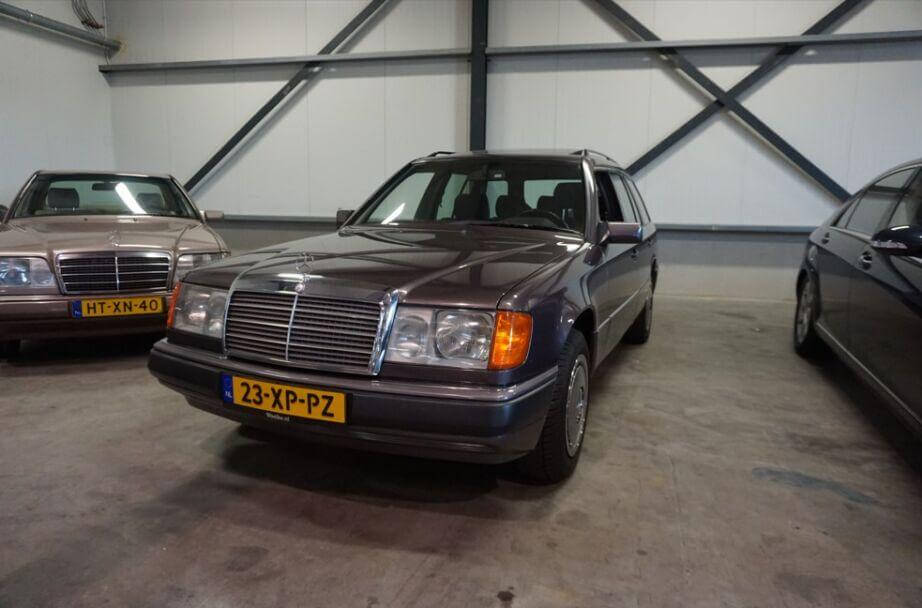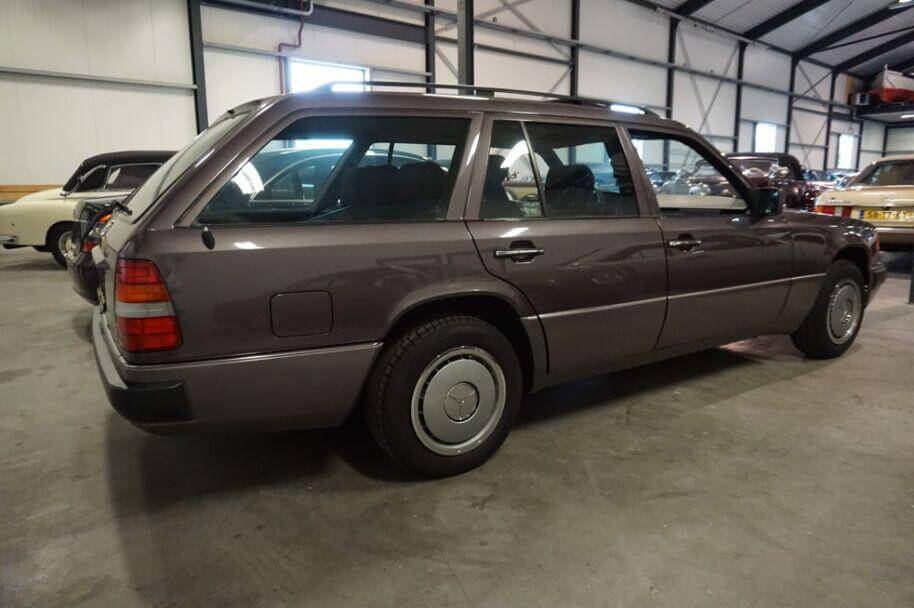
1. Origins and Design
The W124 platform, introduced in 1984, was initially released as a sedan but soon expanded to include the estate (station wagon) model. Designed by Bruno Sacco, it was one of Mercedes’ first models to heavily emphasize aerodynamics, sporting a low drag coefficient (0.28) for its time. The Estate version arrived in 1985, positioned as a luxury station wagon that combined Mercedes-Benz’s hallmark quality with added functionality.
The design featured sleek lines, a spacious interior, and the iconic rectangular headlamps that defined Mercedes models of the era. It included advancements like multi-link rear suspension, a first for a Mercedes-Benz production model, which improved handling and ride quality.
2. Engineering and Features
The W124 was known for its durable construction, designed to withstand the test of time. Mercedes engineered the estate with robust materials, a galvanised body to prevent rust, and a self-leveling rear suspension system to handle heavy loads. Another unique feature was its split-folding rear seats, which gave it exceptional versatility as a family or utility vehicle.
The W124 Estate was available in various engines, from reliable inline-4 and inline-6 gasoline and diesel engines to high-performance V8 engines in later models. Some popular models included the 200T, 230TE, and 300TD, with “T” denoting “Touring,” Mercedes’ term for estate models.
3. Interior and Practicality
The estate’s interior was well-regarded for its quality materials, thoughtful layout, and comfort. It could seat up to seven people with an optional third-row foldable rear-facing seat in the luggage area, a feature especially appreciated by families. Cargo space was substantial, and with the rear seats folded flat, it could carry impressive loads. The W124’s interiors often featured luxurious elements like walnut wood trim and leather upholstery in higher trims.
4. Special Models and Innovations
Mercedes also released some rare, high-performance versions of the W124 Estate, including the 300TE-24 with a 3.0L 24-valve inline-6 engine and the AMG 300TE 6.0. The AMG versions, developed through a partnership with the tuning firm AMG before it became fully integrated into Mercedes-Benz, featured modified suspensions, unique styling, and increased engine power, making them highly collectible.
A limited edition of the 500E (and later E500) sedan variant, with a 5.0L V8 engine, was developed in collaboration with Porsche and is one of the most revered W124 models, though it was never officially available as an estate.
5. Legacy and Influence
The W124 series, especially the estate, left a lasting legacy. Known for its reliability and durability, it became one of Mercedes’ most beloved models, gaining a reputation as a “million-mile” car due to its longevity and solid construction. Many W124 Estates are still on the road today, prized by enthusiasts and collectors alike. Its engineering influenced future Mercedes designs, with its innovative safety features and build quality becoming benchmarks.
6. End of Production and Modern Popularity
Production of the W124 Estate ended in 1996, replaced by the new E-Class W210 model. However, the W124 continues to hold a special place in automotive history, especially among Mercedes-Benz fans and classic car collectors. The combination of classic styling, functionality, and Mercedes’ reputation for engineering excellence has helped maintain its value, making it a sought-after classic.
The W124 Estate remains a testament to Mercedes-Benz’s commitment to quality and innovative engineering in the 1980s and 1990s. Its legacy endures through its owners and enthusiasts, who appreciate its blend of elegance, practicality, and reliability.
